Say hello to your new favorite salmon recipe! This Pan Fried Honey Teriyaki Salmon Fillet is the perfect combination of crispy, tender, juicy, and over-the-top flavorful. Your taste buds will sing at the umami first bite. Even better, it’s quick and easy enough to whip up on a busy weeknight.
Why You’ll Love It
It’s easy to love salmon with its tender, flaky flesh that’s bursting with flavor. In this recipe, I’ll show you how to elevate that already scrumptious fillet with a mouthwatering honey teriyaki glaze.
Here are a few reasons why I think you’ll love it:
- Traditionally, Teriyaki is a mix of soy sauce, mirin, and sugar. This recipe tweaks that formula slightly by incorporating honey and using any rice wine. It makes the end result super-affordable, accessible, and delicious.
- A protective layer of potato starch locks moisture in the filet while it cooks, so every forkful is as succulent as the last.
- Texture is another benefit of dusting your salmon with starch. This recipe will give you a crispy crust and flaky interior. You’ll experience a pleasant contrast between these textures in every bite.
Ingredient Notes
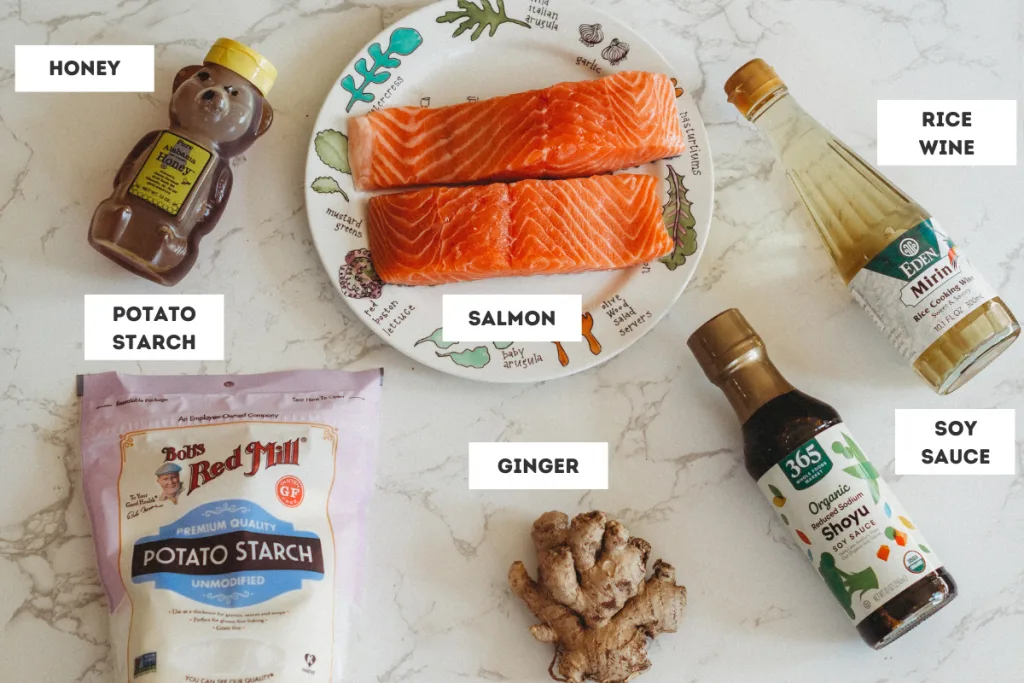
Salmon Filet - The fresher, the better. Look for filets that appear moist, firm, and vibrant in color. The color can range from a deep red to a bright coral pink. It shouldn’t smell fishy or have any brown or discolored spots along the flesh or edges of the filet.
Soy Sauce - I like low-sodium soy sauce, but you could use teriyaki marinade instead. American Teriyaki combines soy sauce and sugar, but the additional sugar will result in a sweeter glaze. If you’re paleo, try using Coconut Aminos instead.
Honey - Self explanatory I think!
Rice Wine - Teriyaki traditionally uses mirin, a type of rice wine, but you don’t have to be that specific. For this recipe, any rice wine will do. You can skip this ingredient if you’d like, but it’s much tastier and more authentic with it.
Ginger - Prepare the ginger however you prefer—julienned, sliced, or grated, but always use fresh ginger for the best flavor.
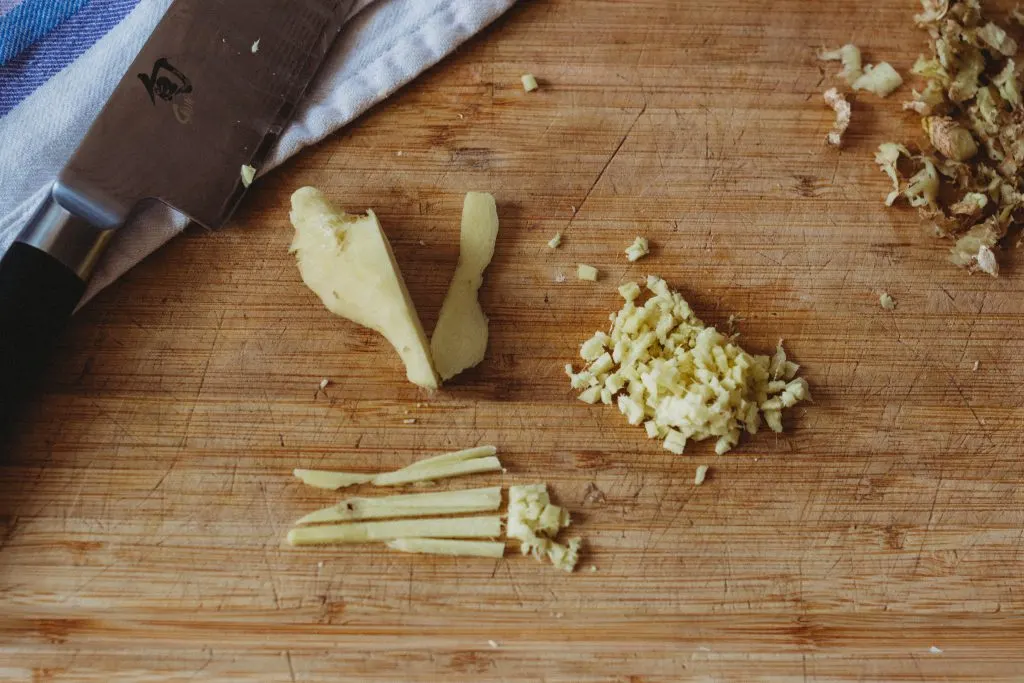
Potato Starch - Potato starch creates a barrier that locks in the salmon’s moisture as it cooks. If you don’t have any on hand, there are several great potato starch substitutes. I like cornstarch as a second choice.
How To Cook Pan Fried Honey Teriyaki Salmon Fillet
Gather your ingredients:
- 2 4-oz salmon fillet
- ⅓ cup soy sauce
- 2 tablespoon honey
- 1 tablespoon rice wine
- 1 tablespoon julienned, sliced, or grated ginger
- 2 tablespoon potato starch or cornstarch
Prepare the fillet. To ensure that your salmon can soak up as much of the teriyaki flavor as possible, score it first. Use a knife to cut a cross-hatch pattern into the salmon flesh, making one extended cut lengthwise and about four crosswise. The slices should be deep; you can cut about halfway through the fillet. Just make sure the skin stays unmarred to hold the fillet together.
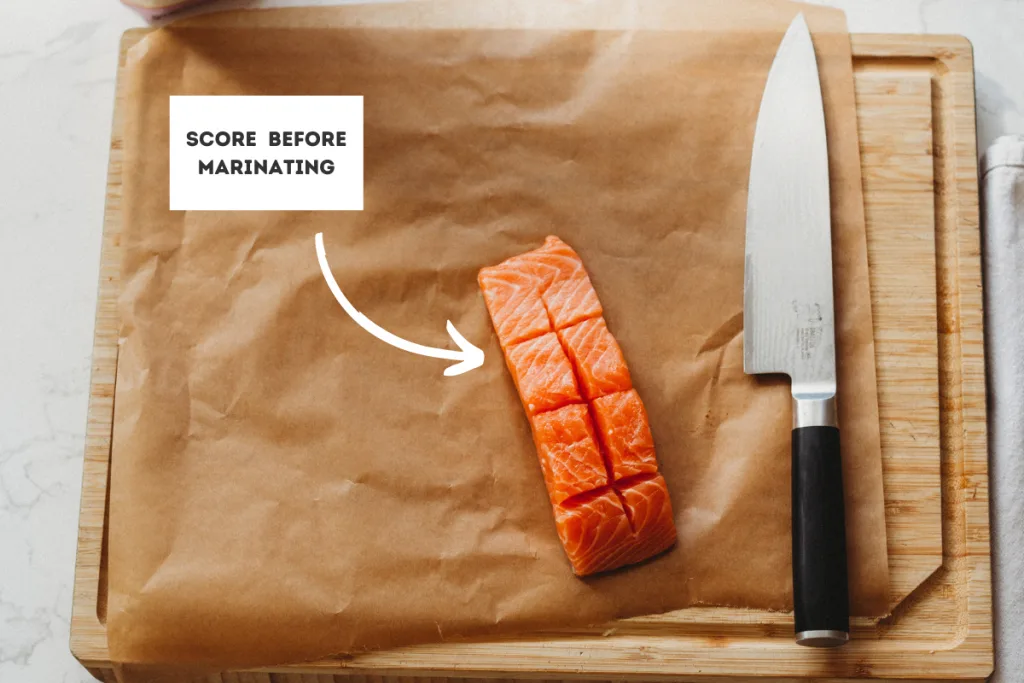
Marinate the salmon. Combine the soy sauce, honey, rice wine, and ginger, then pour this mixture into a resealable plastic bag. Place the scored salmon filet into the bag, and let it marinate for 10 minutes. Then, flip the bag over so that the other side of the salmon can tenderize in the marinade for an additional 10 minutes.
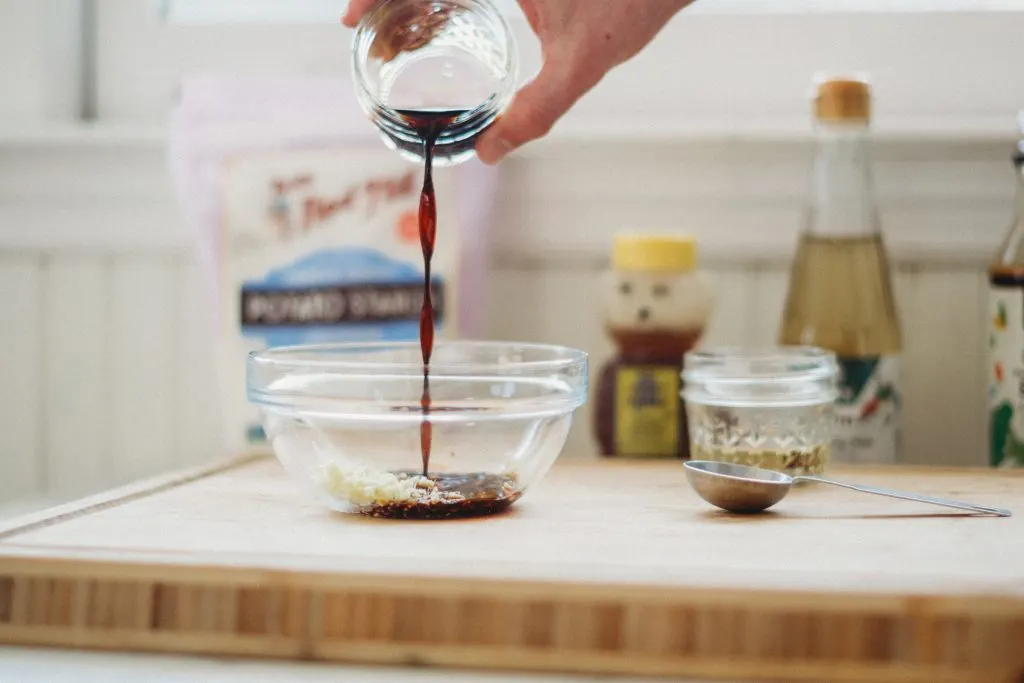

Coat the fillet with potato starch. Sprinkle potato starch evenly across your work surface, or use a plate. Remove the salmon from the marinade and lightly press it into the starch. You’ll want a thin, even coating on both sides of the fillet to create that delectable crispy exterior we’re after.
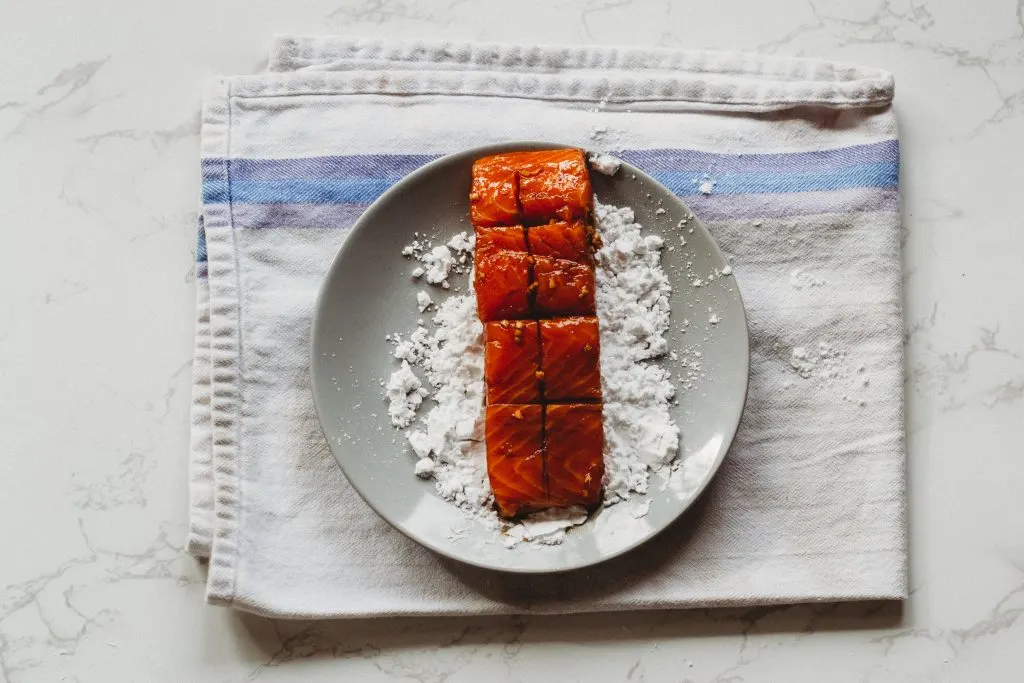
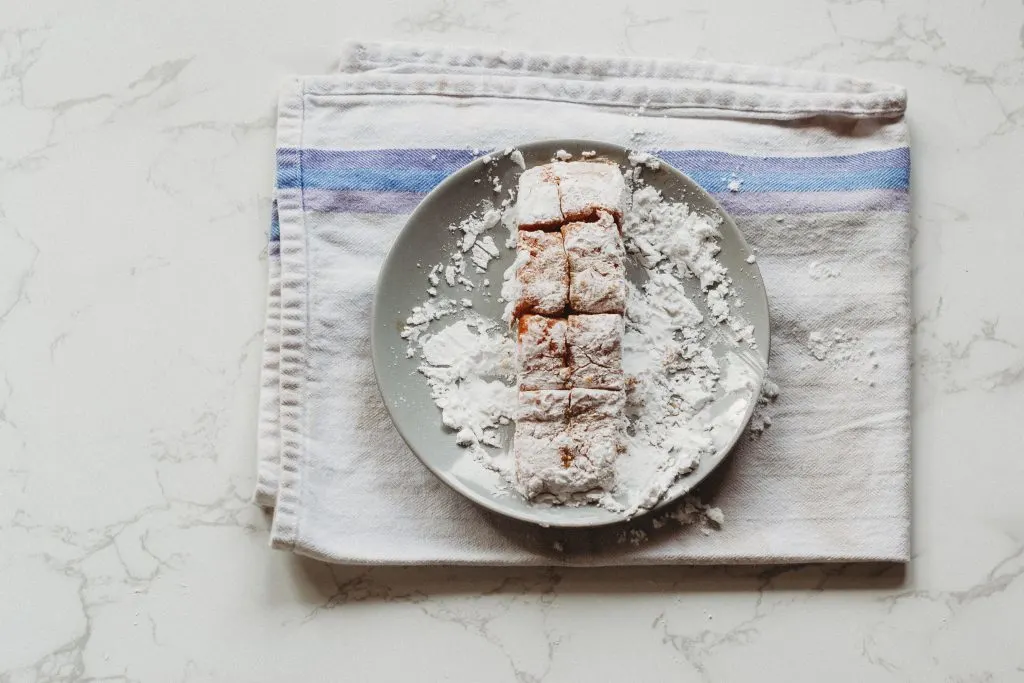
Heat the oil and fry the salmon. Add a couple of tablespoons of your preferred cooking oil to a pan, and place it on your stovetop over medium heat. Once the oil is shimmering, place the salmon into the oil with the skin in contact with the pan. Cook the fish uncovered for 5 minutes, then flip it and cook it for an additional 5. Finally, plate it up, and serve it hot!
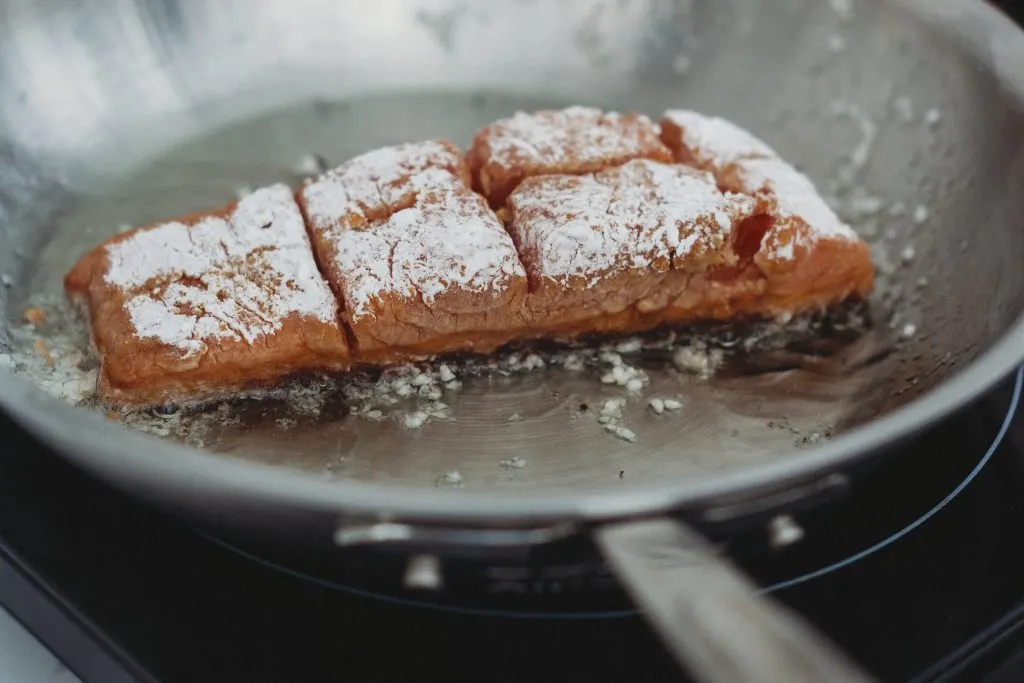
Pro-Tip: Cooking the salmon skin side down first will give you a tasty, crispy finish. Plus, it’s much easier to shimmy a spatula under the skin to flip the fish than to slide it under the flesh without damaging it.
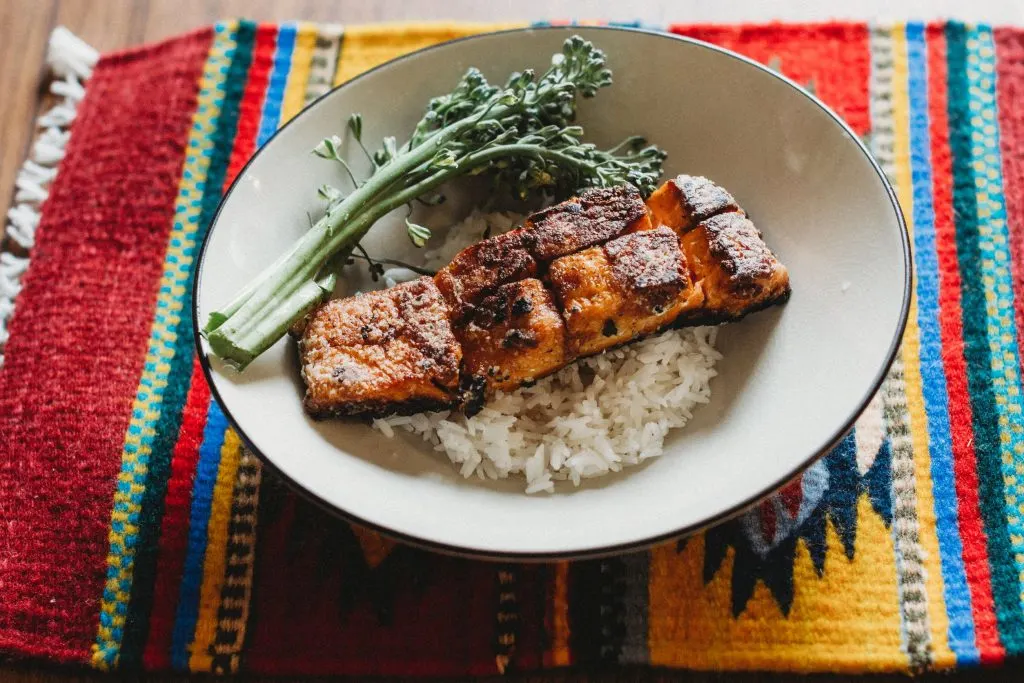
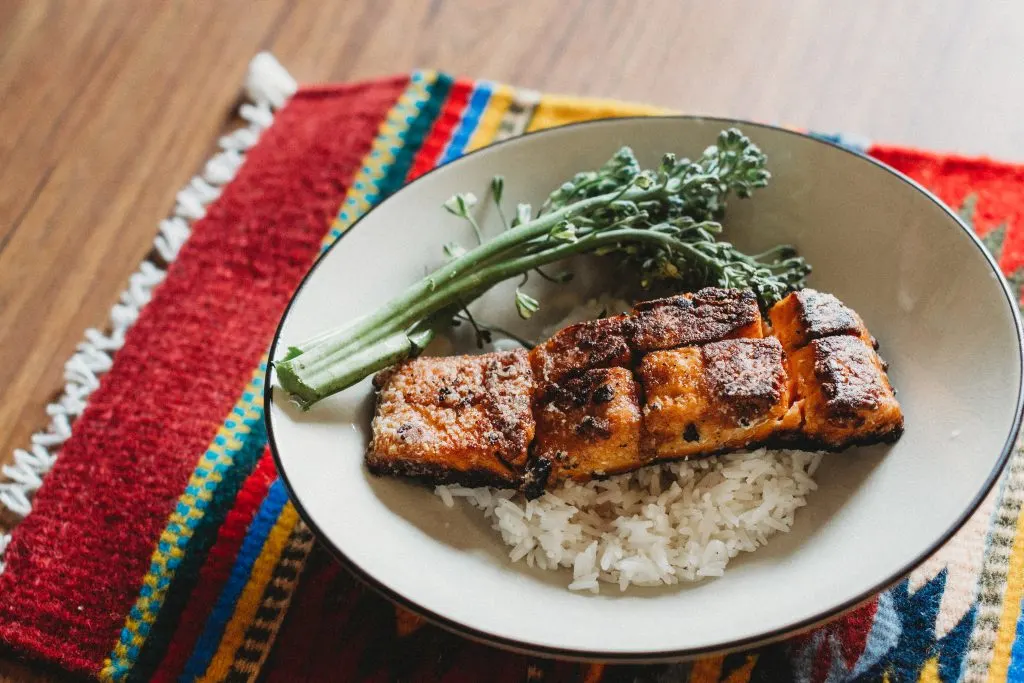
Tips & Tricks
- Score the flesh side of the salmon, not the skin side. Although slicing the skin will prevent curling as the fish cooks, it’ll also lead to a drier fish. This is because a layer of fat between the skin and flesh keeps the fillet moist during cooking. If you expose this fat to direct heat, it’ll leak into the pan instead of into the fish itself.
- Don’t exceed 30 minutes of marinating. Otherwise, the salmon will start to break down and degrade. You’ll pass the point of tender, and the fish will begin to fall apart. It may also get too salty.
- If your house isn’t exceedingly hot (like Southern summer no AC), then the salmon can safely marinate on the counter for 20 minutes. If you’re worried about the safety of these conditions, you can let the salmon marinate in the fridge. But remember to let it come to room temperature again before adding it to the pan so that it cooks evenly.
- When choosing a cooking oil, keep their smoke point in mind. For example, olive oil, canola oil, or avocado oil have high enough smoke points to achieve a crisp exterior without scorching the oil.
Serving Suggestions
Try serving this salmon with Spinach & Garlic Stir Fry for an ultra-healthy and flavorful side. The aromatic garlic pairs well with the ginger in the salmon recipe to create an umami burst of flavor.
Another garlicky option is Oven Roasted Garlic Butter Green Beans. I like to serve the salmon on top of a bed of these tasty and tender green beans for an easy, nutritious meal packed with flavor.
If you like things spicy, try pairing the salmon with Spicy Chinese Broccolini. It’s made with super simple ingredients, and you can add more or less of the hot chili sauce so that it’s as spicy or mild as you like it.
Pan Fried Honey Teriyaki Salmon Fillet
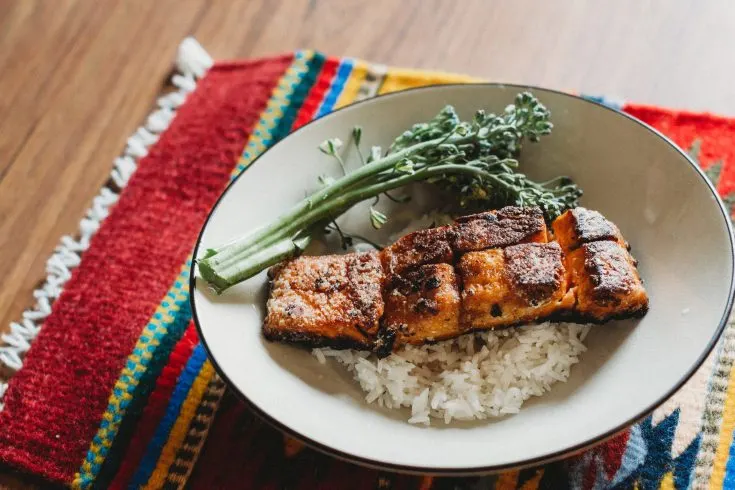
This Pan Fried Honey Teriyaki Salmon is the perfect combination of crispy, tender, juicy, flavorful! Your taste buds will sing at the umami first bite. Even better, it’s quick and easy enough to whip up on a busy weeknight.
Ingredients
- 2 4-oz salmon fillet
- ⅓ cup soy sauce
- 2 tablespoon honey
- 1 tablespoon rice wine
- 1 tablespoon julienned, sliced, or grated ginger
- 2 tablespoon potato starch or cornstarch
Instructions
- Prepare the fillet. To ensure that your salmon can soak up as much of the teriyaki flavor as possible, score it first. Use a knife to cut a cross-hatch pattern into the salmon flesh, making one extended cut lengthwise and about four crosswise. The slices should be deep; you can cut about halfway through the fillet. Just make sure the skin stays unmarred to hold the fillet together.
- Marinate the salmon. Combine the soy sauce, honey, rice wine, and ginger, then pour this mixture into a resealable plastic bag. Place the scored salmon filet into the bag, and let it marinate for 10 minutes. Then, flip the bag over so that the other side of the salmon can tenderize in the marinade for an additional 10 minutes.
- Coat the fillet with potato starch. Sprinkle potato starch evenly across your work surface, or use a plate. Remove the salmon from the marinade and lightly press it into the starch. You’ll want a thin, even coating on both sides of the fillet to create that delectable crispy exterior we’re after.
- Heat the oil and fry the salmon. Add a couple of tablespoons of your preferred cooking oil to a pan, and place it on your stovetop over medium heat. Once the oil is shimmering, place the salmon into the oil with the skin in contact with the pan. Cook the fish uncovered for 5 minutes, then flip it and cook it for an additional 5. Finally, plate it up, and serve it hot!
Notes
- Score the flesh side of the salmon, not the skin side. Although slicing the skin will prevent curling as the fish cooks, it’ll also lead to a drier fish. This is because a layer of fat between the skin and flesh keeps the fillet moist during cooking. If you expose this fat to direct heat, it’ll leak into the pan instead of into the fish itself.
- Don’t exceed 30 minutes of marination. Otherwise, the salmon will start to break down and degrade. You’ll pass the point of tender, and the fish will begin to fall apart. It may also get too salty.
- If your house isn’t exceedingly hot (like Southern summer no AC), then the salmon can safely marinate on the counter for 20 minutes. If you’re worried about the safety of these conditions, you can let the salmon marinate in the fridge. But remember to let it come to room temperature again before adding it to the pan so that it cooks evenly.
- When choosing a cooking oil, keep their smoke point in mind. For example, olive oil, canola oil, or avocado oil have high enough smoke points to achieve a crisp exterior without scorching the oil.
Recommended Products
As an Amazon Associate and member of other affiliate programs, I earn from qualifying purchases.
-
 Lee Kum Kee Premium Light Soy Sauce, 16.9-Ounce + Lee Kum Kee Premium Dark Soy Sauce - 16.9 fl. Ounce + One NineChef Spoon
Lee Kum Kee Premium Light Soy Sauce, 16.9-Ounce + Lee Kum Kee Premium Dark Soy Sauce - 16.9 fl. Ounce + One NineChef Spoon -
 Michiu (Rice Cooking Wine)- 750ml (Pack of 1) by QIAN HU
Michiu (Rice Cooking Wine)- 750ml (Pack of 1) by QIAN HU -
 Nature Nate's 100% Pure Raw & Unfiltered Organic Honey; Product of Brazil and Uruguay; Packaged in 16 Ounce. Squeeze Bottle; Enjoy Honey's Balanced Flavor and Wholesome Benefits
Nature Nate's 100% Pure Raw & Unfiltered Organic Honey; Product of Brazil and Uruguay; Packaged in 16 Ounce. Squeeze Bottle; Enjoy Honey's Balanced Flavor and Wholesome Benefits
Nutrition Information:
Yield:
2Serving Size:
1Amount Per Serving: Calories: 391Total Fat: 14gSaturated Fat: 3gTrans Fat: 0gUnsaturated Fat: 10gCholesterol: 71mgSodium: 2389mgCarbohydrates: 34gFiber: 1gSugar: 18gProtein: 29g
The nutrition information for this recipe is an approximate total per serving. Please double check the nutrition information for your exact ingredients and brands for more precise nutrition information.
Pin for later!
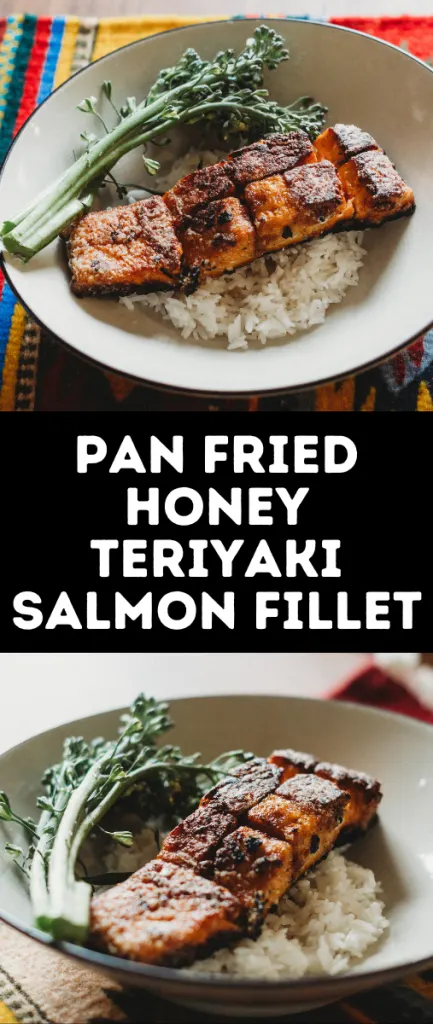

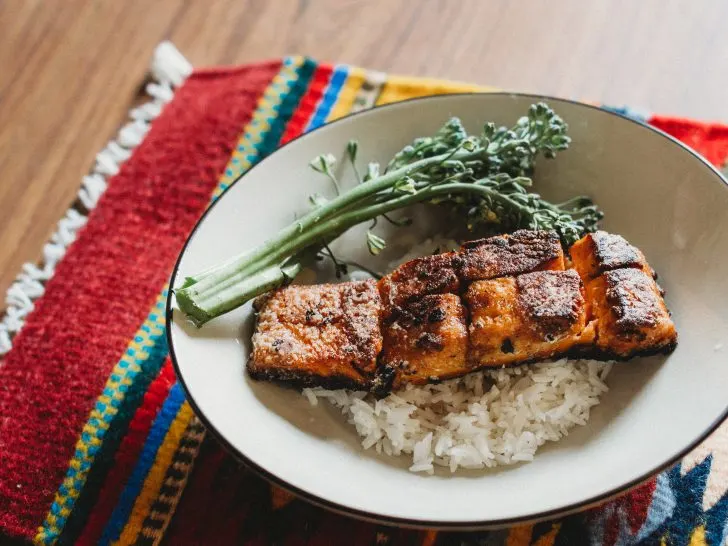
kristina
Wednesday 6th of November 2013
I like my salmon more well done. Is 5 minutes per side enough or is that going to be rare?
tsaitina
Wednesday 6th of November 2013
Hey Kristina, I usually do about 5 minutes on each side and it's well done but not TOO well done. I'm not sure how well done you like your Salmon, so I suggest to start off with 5 mins, flip it over, and then cook until desired amount of well done-ness. Good luck! Hope it goes well!
Hessie
Wednesday 18th of September 2013
before point 4? I assume that this is the ginger sitting on the salmon, there is no mention of it on the receipe?
Tina T.
Wednesday 18th of September 2013
Yep, it is. I mention in #2 to mix the ginger with honey, rice wine, soy sauce and then in #3 I say to dump that mixture on to the salmon. That's why it is all sitting on the salmon :)